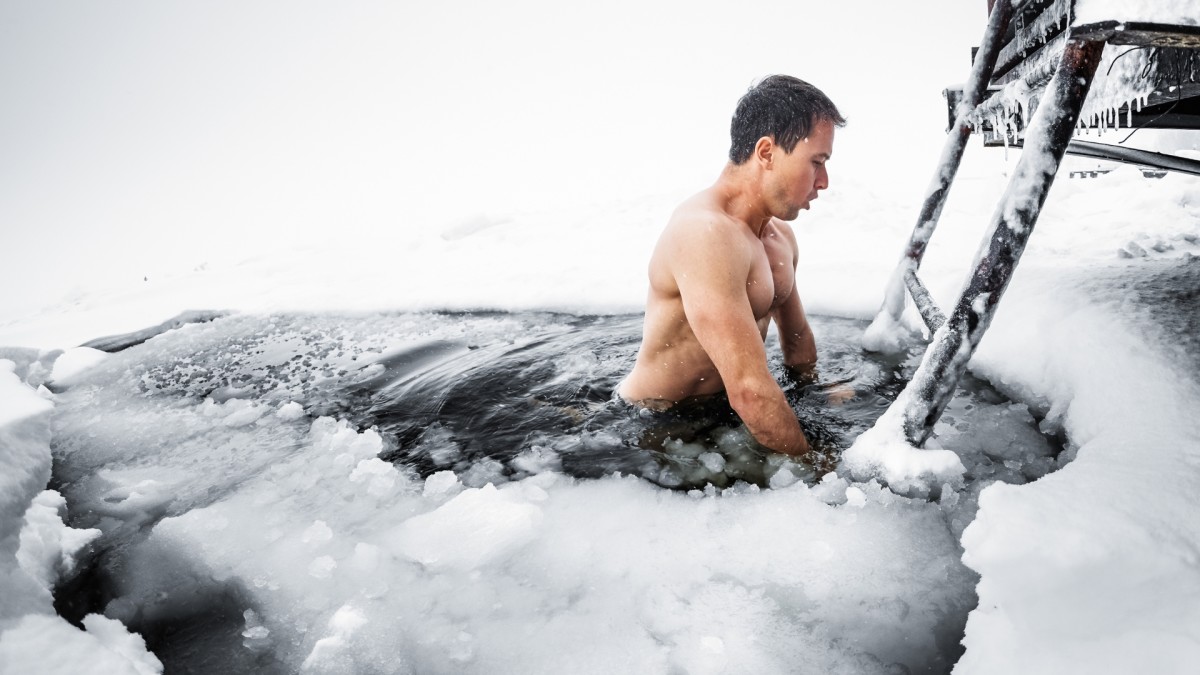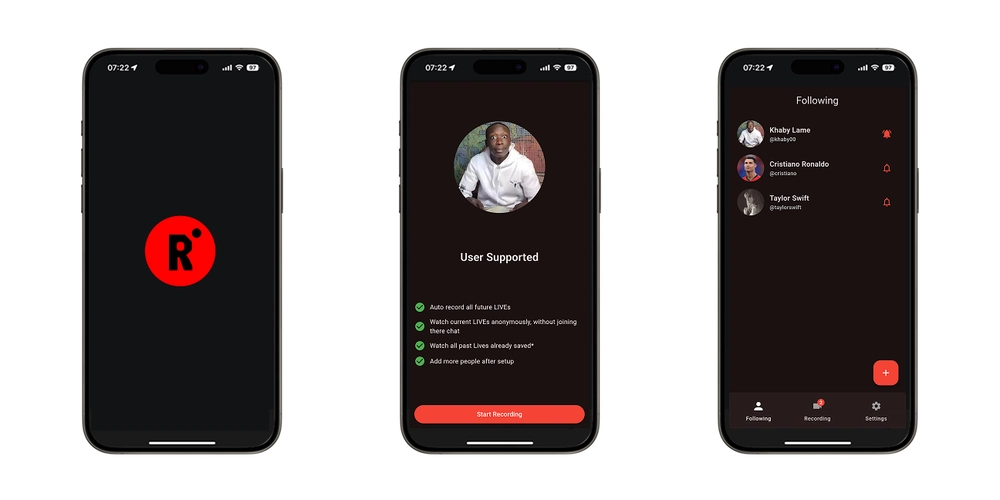Should You Cold Plunge Before or After Exercising? The Answer Could Change Your Recovery Game
The right timing can make all the difference.

Love 'em or hate 'em, cold plunges are here to stay. And although the practice is touted for its ability to aid in workout recovery, experts have differing opinions on whether you should do it before or after you exercise.
Though cultures have practiced cold water immersion for centuries, it's only been over the last few years that cold plunges have soared in popularity and praise around the world. Now they're a staple in many people's health and fitness routines, and even scientists are on board. In fact, researchers have been uncovering a ton of benefits of cold plunge therapy related to inflammation, stress, immunity, sleep quality, and quality of life.
So, while it seems like a no-brainer to partake in cold plunging, there are some factors you should consider when it comes to timing and how that will affect your body. Below, we break down the need-to-knows of cold plunges.
What Is a Cold Plunge?
Cold plunges, also called ice baths or cold water immersion (CWI), are pretty self-explanatory: You immerse yourself in freezing cold water, often with ice. It feels precisely as uncomfortable as it sounds, but the discomfort is part of the thrill for many people.
The International Ice Swimming Association (IISA) and the International Winter Swimming Association (IWSA) classify water temperatures into three categories: ice water is 8°F to 36°F (−2 to +2°C), freezing water is 36°F to 41°F (+2.1 to 5°C), and cold water 41°F to 48°F (+5.1 to +9°C). Cold plunge tub temperatures typically fall into a range of about 40 to 60°F (4 to 15°C). For comparison, lukewarm water you'd use for a regular shower is about 98 to 105°F (37 to 41°C).
How long you spend in a cold plunge tub greatly depends on your bravery, but also on how long you've been practicing it. Most sources say you need to spend at least 30 seconds in a cold plunge tub for it to count, with most sessions ranging from 1 to 5 minutes. Many people build up a tolerance and stay in longer.
Related: Finnish Athletes Swear by This Cold-Therapy Trick for Faster Recovery
Should I Cold Plunge Before or After a Workout?
Since taking a cold plunge might fight inflammation, it makes sense that a post-workout ice bath would be a good idea. But that's not necessarily the case.
Jonathan Leary, kinesiologist, Doctor of Chiropractic Medicine, and Founder and CEO of Remedy Place, says you should cold plunge before your workout rather than right after. "After a workout, you want your muscles to be inflamed, sending blood flow to the area brings oxygen and nutrients to your muscles to heal the microscopic tears that occur during exercise," he explains.
Post-workout cold plunges could interfere with the "good" inflammatory process, which promotes healing and new muscle growth. "If we blunt that response, we might be losing out on the opportunity to actually have gains from our workout or to have positive adaptation in the muscles," explains exercise physiologist Alexander Rothstein, Ed.D., assistant professor of exercise science at New York Institute of Technology.
Performance Physiologist Carson Gantzer from Human Powered Health says if you are going to take a cold plunge on the day of a resistance training session, do it either before the resistance training session or a few hours afterward. "By doing this, we give the inflammation process time to stimulate muscle growth and prevent the hard work during the training from going to waste," he explains.
Cold plunging before a workout can help you feel more energized and ready to rock your workout, according to Rothstein. But he warns that it can potentially increase the time it takes to warm up, so it's crucial to watch for signs of tight, tense muscles and warm up thoroughly before training.
If you need to perform at a high level for a sport like basketball, says Rothstein, trying a cold plunge after a workout or training session could help prevent soreness for game day. However, you might be impacting the healing process in ways that could increase your risk of overuse or overtraining, so proceed with caution, he says.
Related: The Navy SEALs' Secret to Enhancing Mental Toughness in Everyday Life
Benefits of Cold Plunging
The moment you step into an ice bath, your body undergoes a series of physiological changes. Here are some of the potential benefits of cold plunging that can happen as your body adapts.
Improved Metabolic Health
Cold exposure stimulates brown adipose tissue (BAT), which is known as "good" fat because it burns calories to generate heat, increasing energy expenditure. The theory is that this might boost fat loss and reduce harmful white adipose tissue. CWI might also reduce insulin resistance, making your body more sensitive to insulin, which helps regulate blood sugar levels and protects against developing metabolic diseases like type 2 diabetes.
Better Mental Health and Energy
People who participate in studies on cold plunges and other forms of CWI typically report feeling more alert, less tired, more energetic, and in a better mood afterward. Researchers think this is likely due to the cold shock causing the release of endorphins and hormones like norepinephrine.
"The rush of endorphins and dopamine you experience after an ice bath is often referred to as a natural high,” says Leary, adding that this sense of accomplishment and positivity can shift your entire day. "You’ll notice a boost in your mood, a clearer mind, and a sense of energy that stays with you long after you’ve stepped out of the water," he says.
More Resilience
Ask any cold plunge fanatic, and they'll tell you one of the biggest benefits of cold plunging is that it teaches you to endure discomfort, both physically and mentally. When you regularly expose your body to cold, it adapts, making you stronger and more resilient over time, says Leary. "In just six minutes, you’re training your mind to stay calm under pressure, to embrace discomfort, and to push through barriers," he adds. This resilience carries over to your daily life, so you'll feel more capable of tackling challenges and pushing through stressful times.
Less Inflammation
According to Leary, immersing yourself in cold water triggers your circulatory system to kick into high gear, constricting blood vessels, and then rapidly dilating them once you step out. "This process boosts blood flow and reduces inflammation," he explains.
A research review published in the International Journal of Circumpolar Health suggests that this vasoconstriction may affect the production of cytokines, help control chronic autoimmune inflammation, and influence inflammatory processes in the body. Though blunting inflammation can get in the way of proper recovery, the research does suggest it can help reduce muscle soreness and swelling and flush metabolic waste.
Lower Risk of Cardiovascular Disease
Once you become adapted to the cold, certain markers associated with cardiovascular health might improve, according to reviews of current research. One reason might be the effect of cold water on circulation, but this area requires more research to know for sure.
Final Word on Cold Plunges
The benefits of cold plunging stem, for the most part, from the fact that it's a stressor on the body, which forces it to adapt, according to Rothstein. But he says exercising is also a stressor that causes the body to adapt, but it comes with even more benefits than cold plunges, like bigger muscles, better endurance, and stronger bones and muscles. So if you're going to pick one, choose a workout over a plunge.






































































